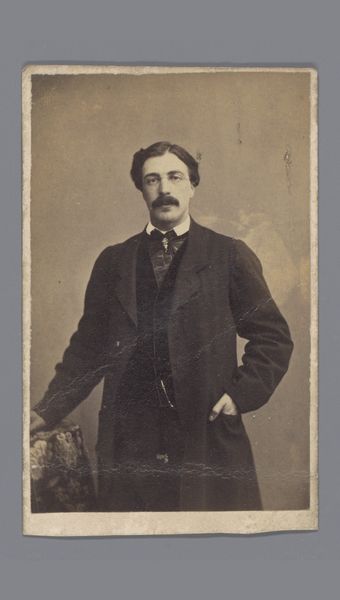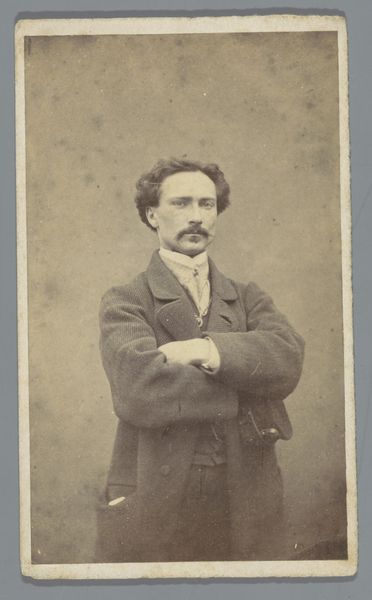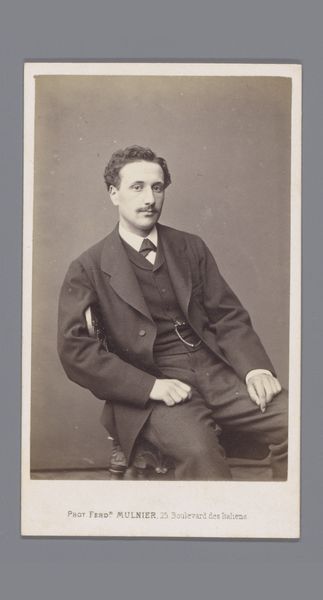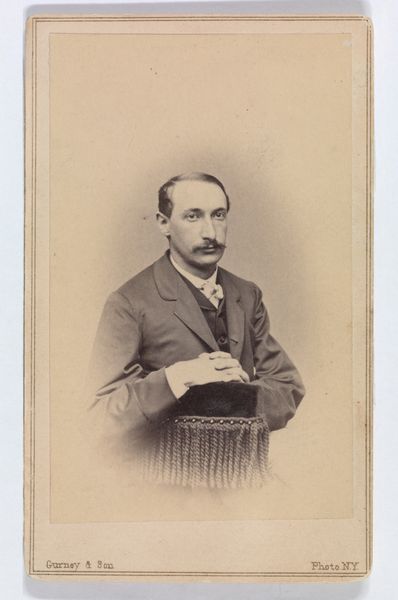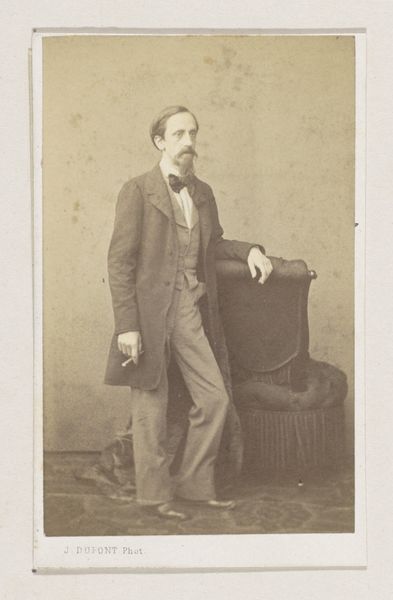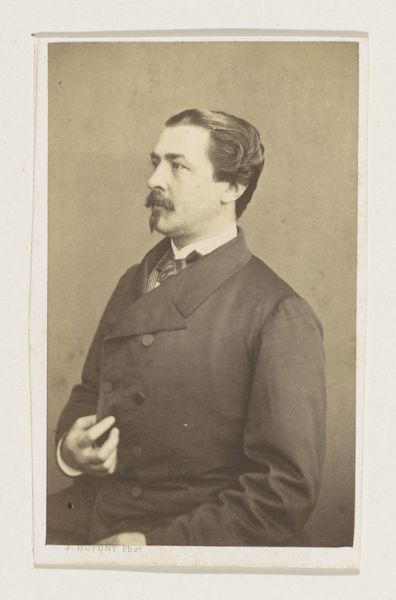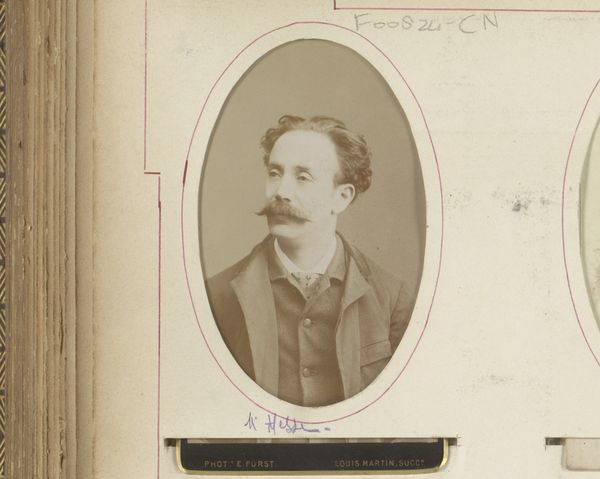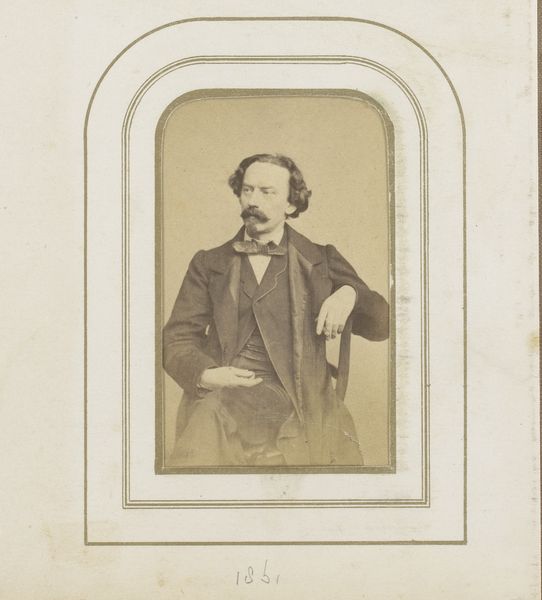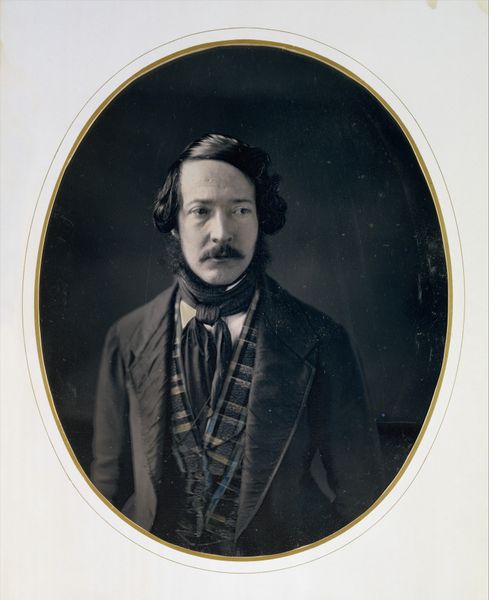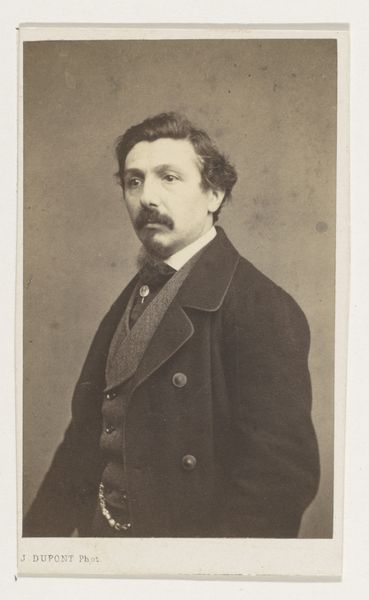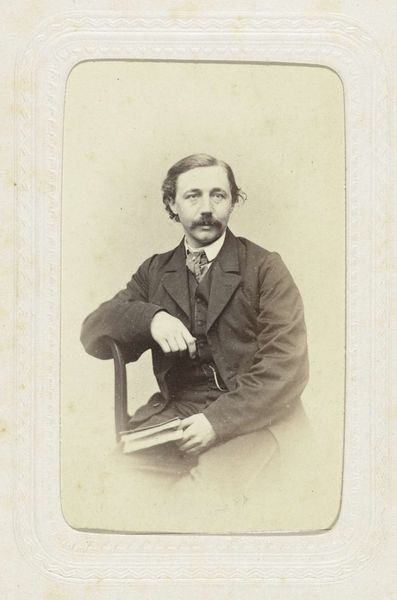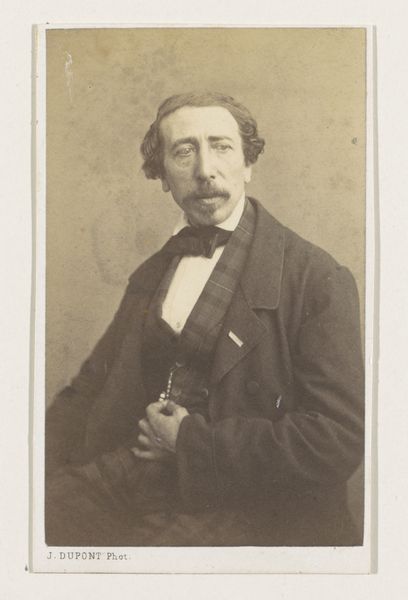![Untitled [portrait of an unidentified man] by Jeremiah Gurney](/_next/image?url=https%3A%2F%2Fd2w8kbdekdi1gv.cloudfront.net%2FeyJidWNrZXQiOiAiYXJ0ZXJhLWltYWdlcy1idWNrZXQiLCAia2V5IjogImFydHdvcmtzLzc1YjFjYzcxLTI0ZjgtNDM3Ni05ZTUxLWY4ZjgyYWRlYWM2NC83NWIxY2M3MS0yNGY4LTQzNzYtOWU1MS1mOGY4MmFkZWFjNjRfZnVsbC5qcGciLCAiZWRpdHMiOiB7InJlc2l6ZSI6IHsid2lkdGgiOiAxOTIwLCAiaGVpZ2h0IjogMTkyMCwgImZpdCI6ICJpbnNpZGUifX19&w=3840&q=75)
Untitled [portrait of an unidentified man] 1858 - 1869
0:00
0:00
photography, albumen-print
#
portrait
#
photography
#
historical photography
#
19th century
#
united-states
#
genre-painting
#
albumen-print
#
realism
Dimensions: 3 1/2 x 2 1/4 in. (8.89 x 5.72 cm) (image)4 x 2 7/16 in. (10.16 x 6.19 cm) (mount)
Copyright: Public Domain
This is an early photograph of an unknown man, made by Jeremiah Gurney, a prominent New York photographer of the mid-19th century. Back then, photography involved a complex, alchemical process using light-sensitive materials and chemical baths. Look at the sepia tones and the incredible detail captured in the man's face and clothing. The smooth gradations of light and shadow were achieved through careful manipulation of exposure time and development techniques. Each photograph was a unique object, a direct trace of the sitter's presence and the photographer's skill. Consider the social context. As photography became more accessible, it transformed portraiture, democratizing access to image-making. While painting remained the preserve of the elite, folks from a wider range of social classes could now participate in visual culture. Ultimately, appreciating this photograph means recognizing the convergence of science, art, and social change it represents. It challenges us to consider photography not just as a means of documentation, but as a powerful force shaping identity and representation.
Comments
minneapolisinstituteofart almost 2 years ago
⋮
An important part of New York City-based photographer Jeremiah Gurney’s business was making small-size portrait photographs. Beginning in the 1850s, cartes de visite (calling cards, or visiting cards) photographs were popular. They were often made with a four-lensed camera, capturing four of the same image at once. They were printed eight on a sheet and each photograph was mounted on a thick cardboard paper sized 2.5 in. by 4 in. Cartes de visite were shared among families and friends, and mostly were stored in photographic albums. However, by the early 1880s, cartes de visite were replaced by larger cartes de imperiale (cabinet card), also albumen prints, mounted on cardboard backs measuring 4.5 in. by 6.5 in. Because of their size, cartes de imperiale would have been visible from across the room. As such, they were often displayed using frames and small stands.
Join the conversation
Join millions of artists and users on Artera today and experience the ultimate creative platform.
